Frederick Frieseke’s early works, based on interior studio subjects, emphasized solid form and firm contours. But by 1908, he began to exhibit models in outdoor settings with a passion for the distinctive color arrangements for which he is known. Often, he adopted the rich, decorative patterns and textures of Edouard Vuillard, Pierre Bonnard, and the other Nabis painters. Yet, as if recalling the work of Theodore Robinson, an artist a generation removed, his landscapes reflect Whistler and the Aesthetic movement that emphasizes a persistent interest in surface and pattern rather than the concerns of pure Impressionism. That is not surprising. Americans adapted French Impressionism to their interests and aesthetics. Yet when queried as to whether or not he considered himself a true Impressionist, Frieseke was resolute. “Yes, I believe I am…I laid aside all rules of painting when I began and went to nature.” (Clara MacChesney, “Interview with Frieseke,” New York Times, June 7, 1914). In truth, Frieseke, who had referred to Fantin-Latour in 1914 as a ‘modern painter,’ was not burdened by antiquated styles. He embraced Impressionist, Post-Impressionist, and Nabis artistic conventions without succumbing to radical styles of expression. With this in mind, Hill at Giverny, painted sometime before 1915, is a work that can be viewed both as a light-filled hillside and as a decorative pattern and a flattened field of color, suggesting the distinctive native modernism to be found in works by Arthur Wesley Dow, and pictures by Georgia O’Keeffe or Arthur Dove.

Prompted by his desire to push light and color intensity, Frieseke explored several locations along the Seine, visiting Giverny in August 1905. Set along the valley and a patchwork of small fields, the quaint village was an escape from an encroaching modern world, its atmospheric microclimate infused with hues of iridescent color. Frieseke arrived with his wife Sadie to settle in Giverny the following summer in 1906. They took possession of Theodore Robinson’s former home, which shared a fence with Monet’s beloved Clos Normand and its carefully cultivated gardens. Monet, the overarching deity, struck a mythic presence among the American community and was, according to Guy Rose, “the chief object of interest…(who) always looked foreboding. Yet among us all, we kept track of what he was doing.” (Guy Rose, “At Giverny,” Pratt Institute Monthly 6, December 1897). Frieseke never thought of Monet as anything but an equal. He and his wife Sadie were intensely respectful of Monet’s privacy. They spoke fluent French and maintained an uncomplicated relationship with the artist. Indeed, accounts of Frieseke’s appreciation for Impressionism were limited to Renoir, who, by example, enticed him to use paint sparingly on clean, primed canvas. Truthfully, Frieseke was keenly fascinated with Monet’s optical acuity and the assertive structuring of his canvases.
Monet’s Le Mont Riboudet à Rouen au Printemps was painted in 1872 before the Impressionists had won the grudging acceptance of a few sympathetic critics. At that time, the technical aberrations or eccentricities of Frieseke’s Hill at Giverny, with its vigorous ‘unnatural’ colors and sketchy brushwork, could only have been validated if one accepted the premise of capturing a momentary effect of light. Frieseke, of course, faced none of the contentious opposition Monet did. But the two paintings resonate with the palpable feeling of conveying the moment with spontaneous immediacy that is accurate, yet poetic. The colors are unblended in either case and the hillside, with its communal fields of grain, is a patchwork of color that suggests a modern approach. Conversely, both paintings stake a claim for the ascendency of the artist as an interpreter of nature and share an agrarian or pastoral setting as well as a thematic link to artists such as Julies Bastien-Lapage, one of several painters associated with the naturalist or realist movement.
FREDERICK CARL FRIESEKE (1874-1939)
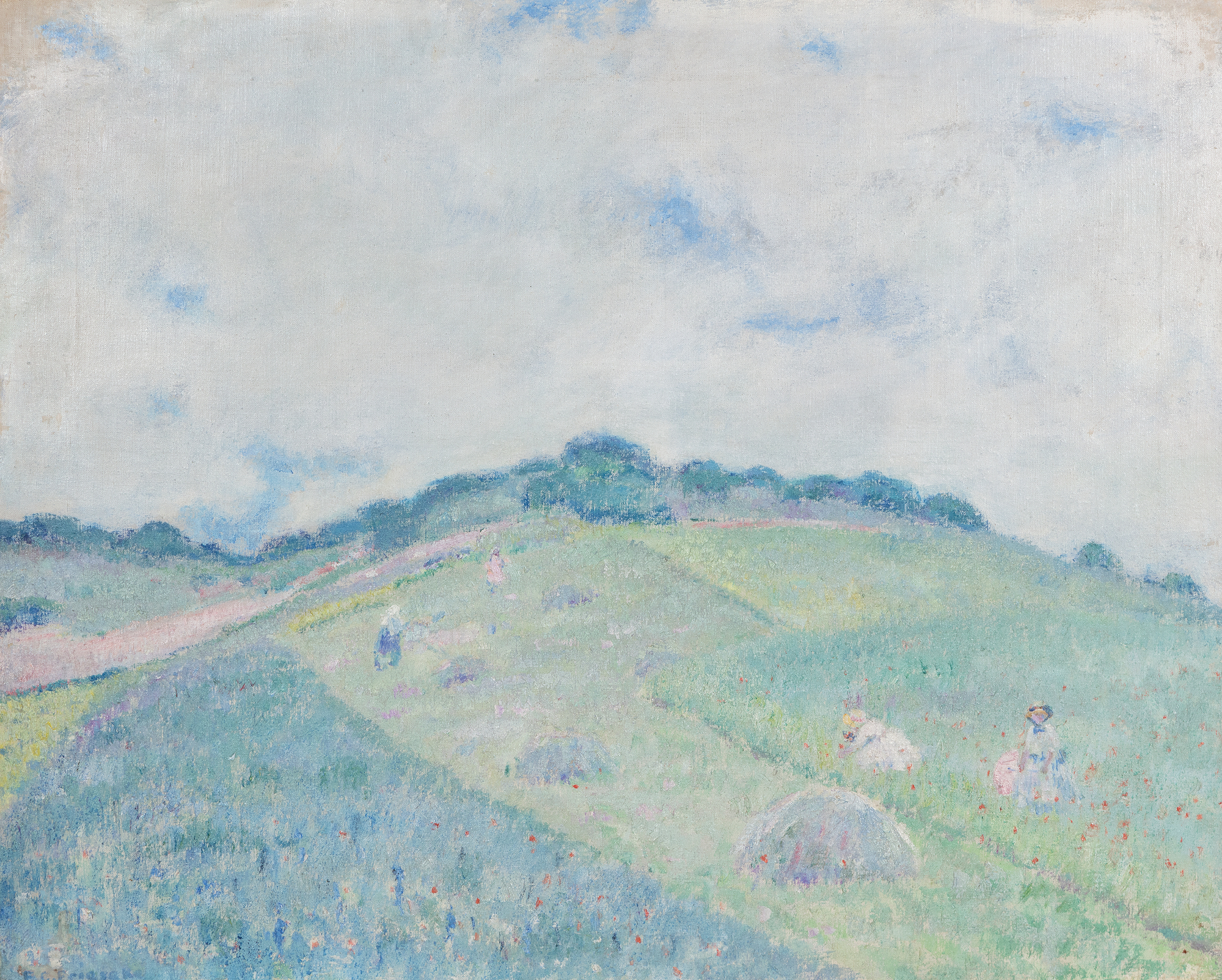
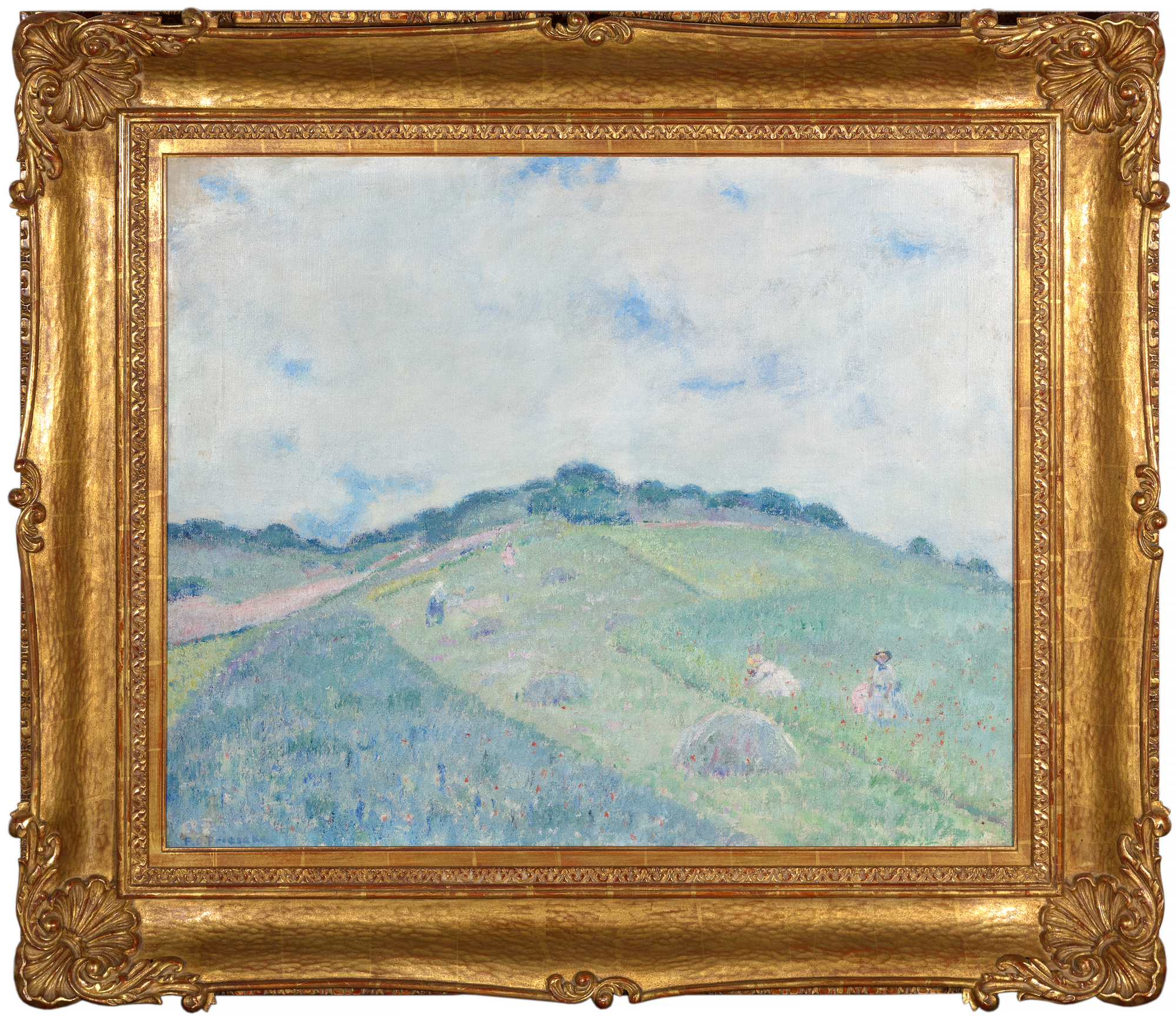
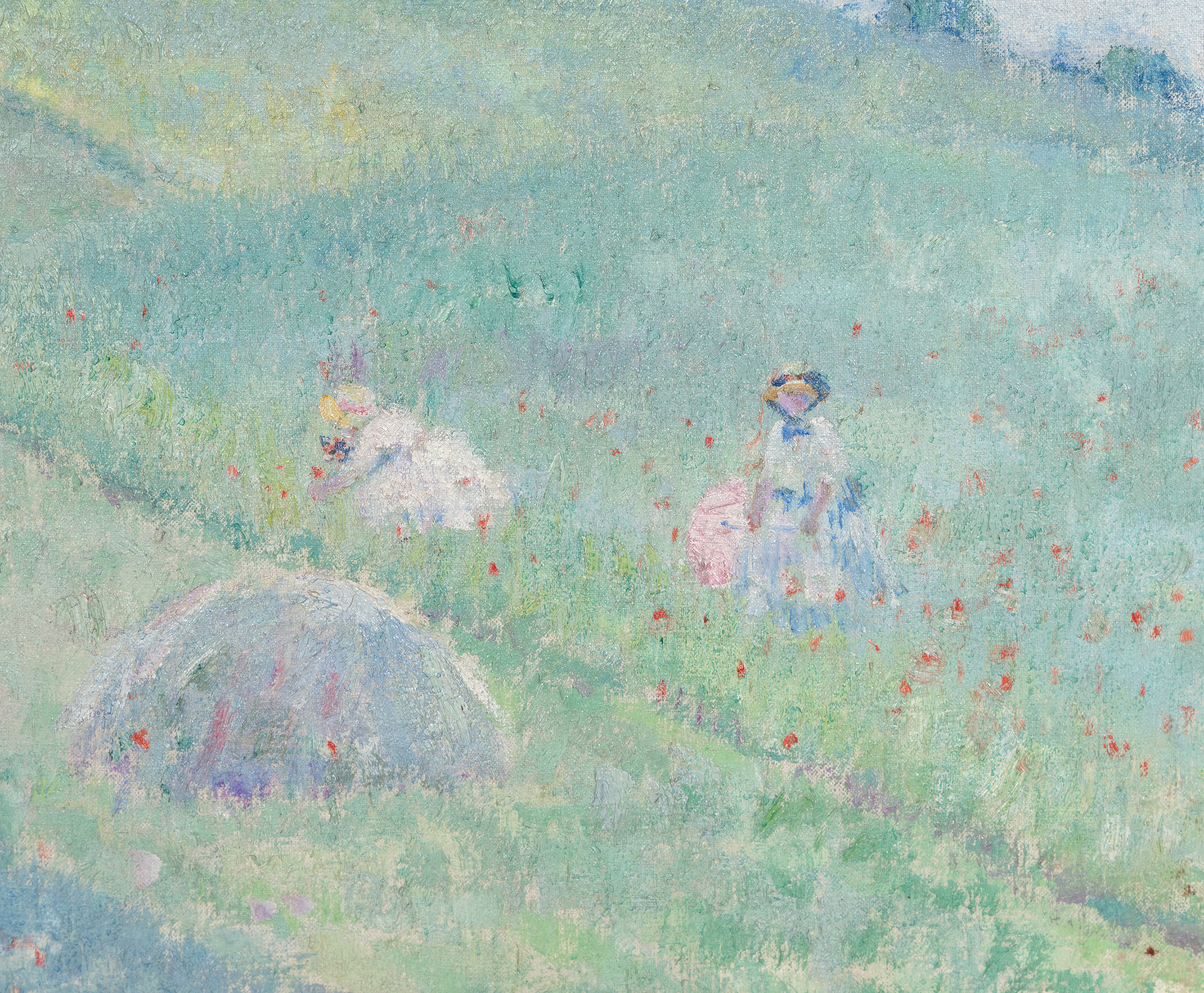
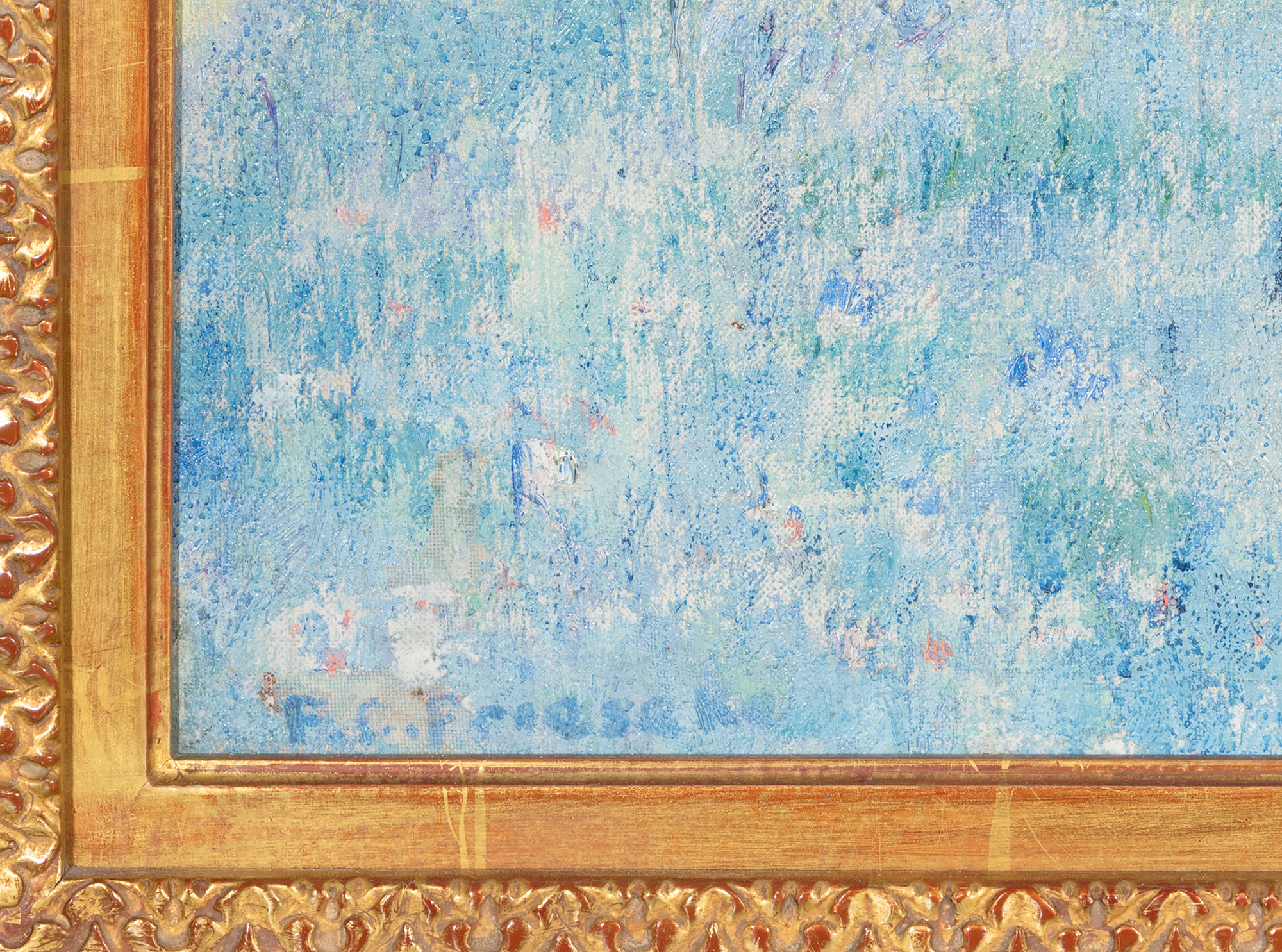
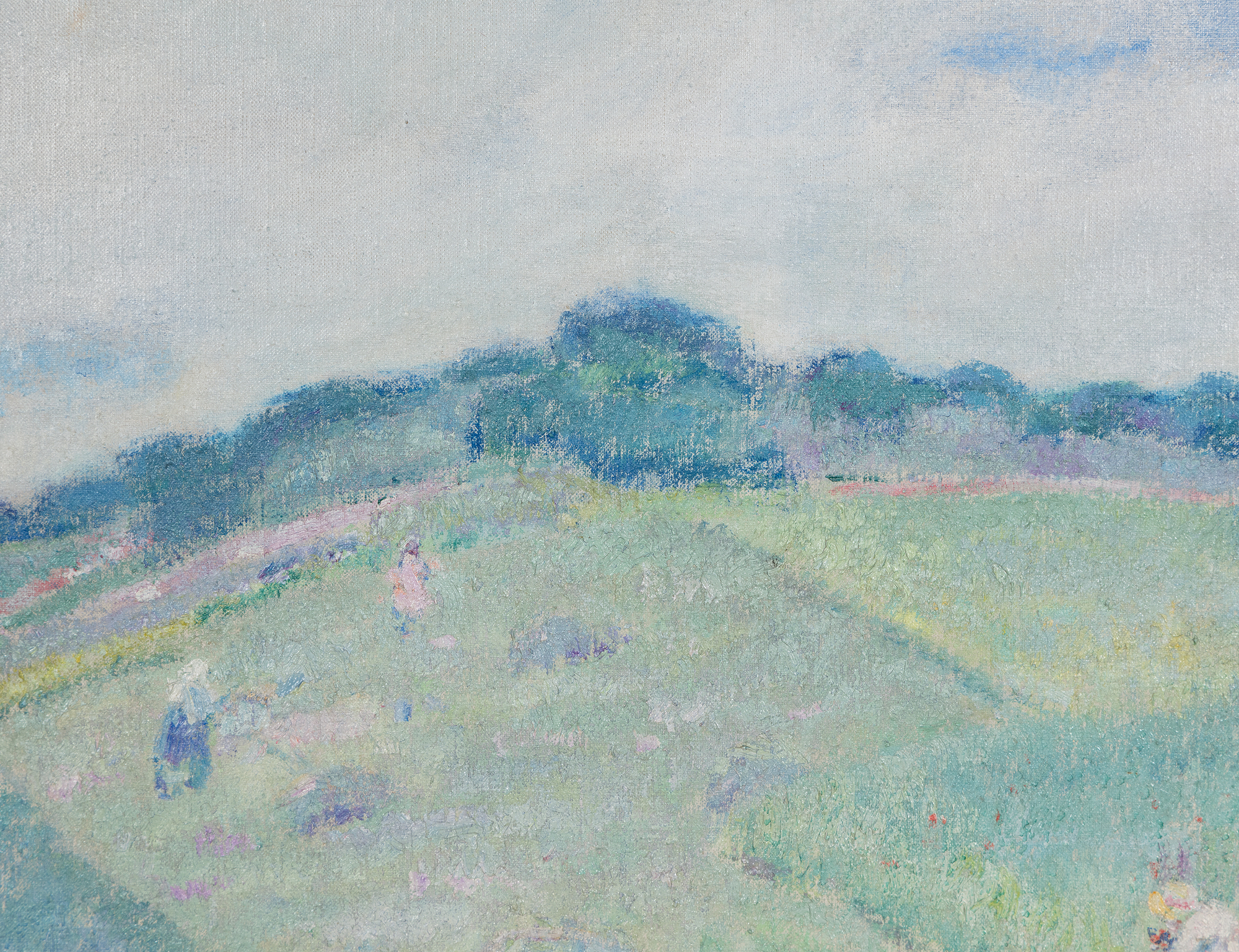
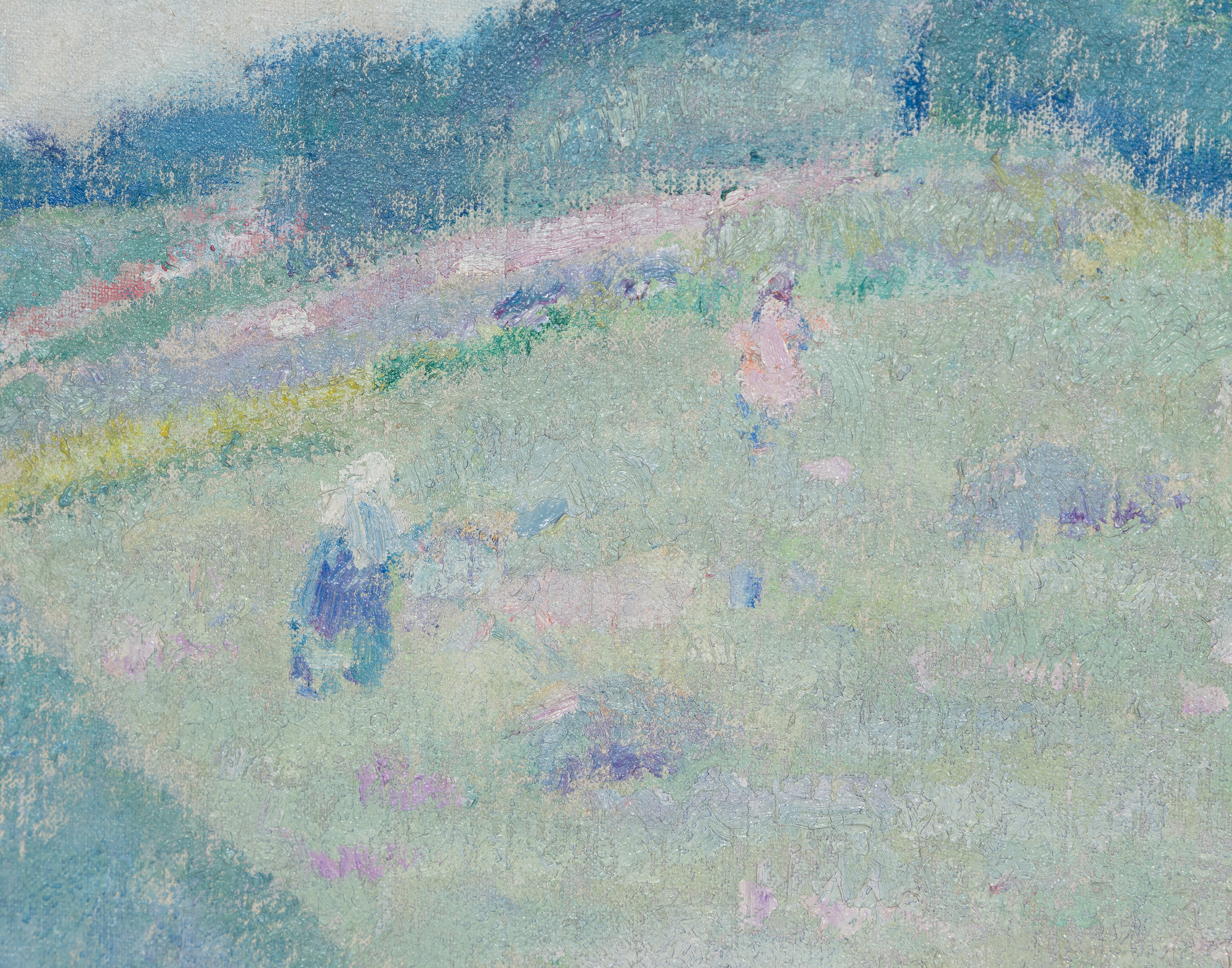
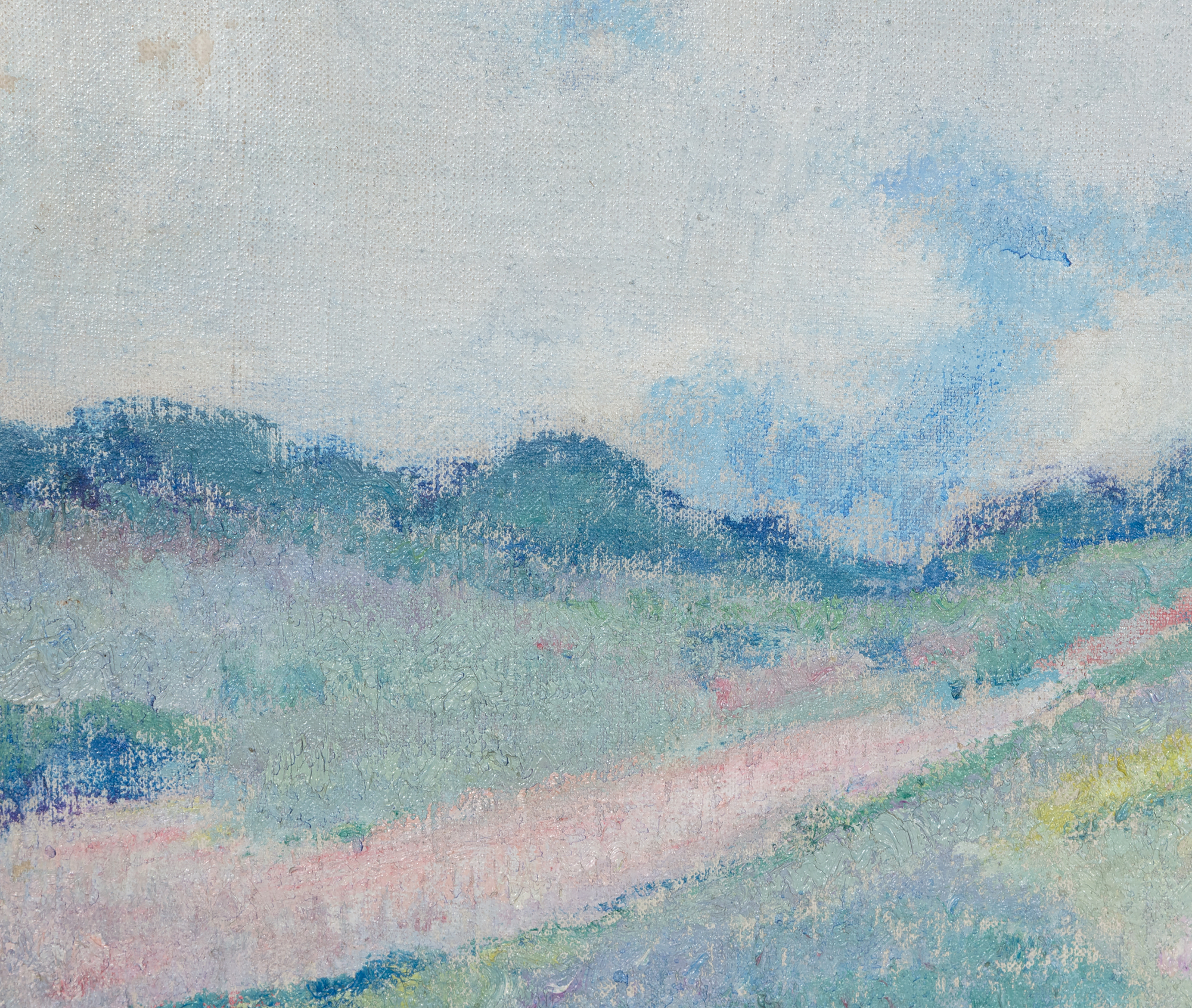
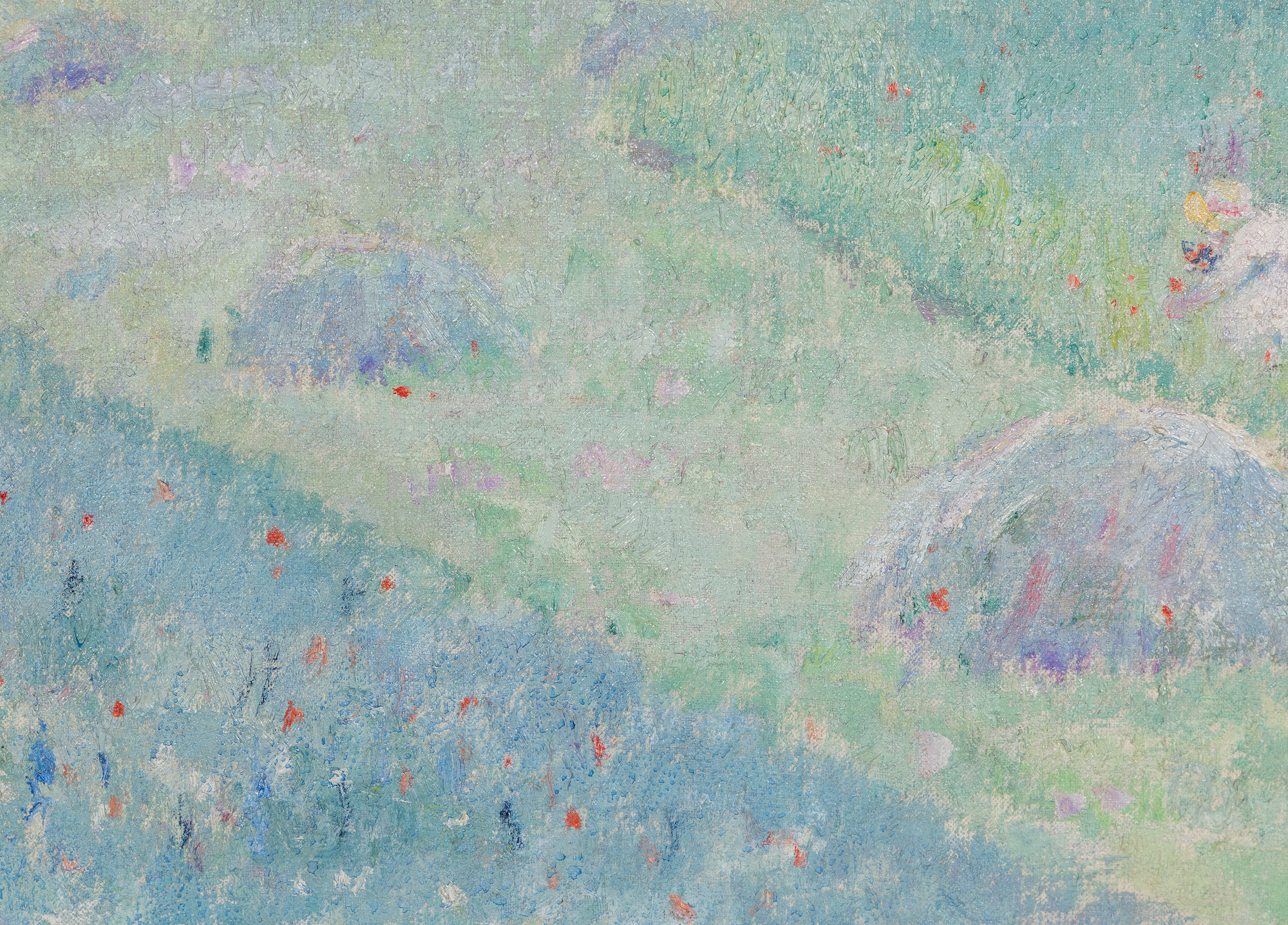
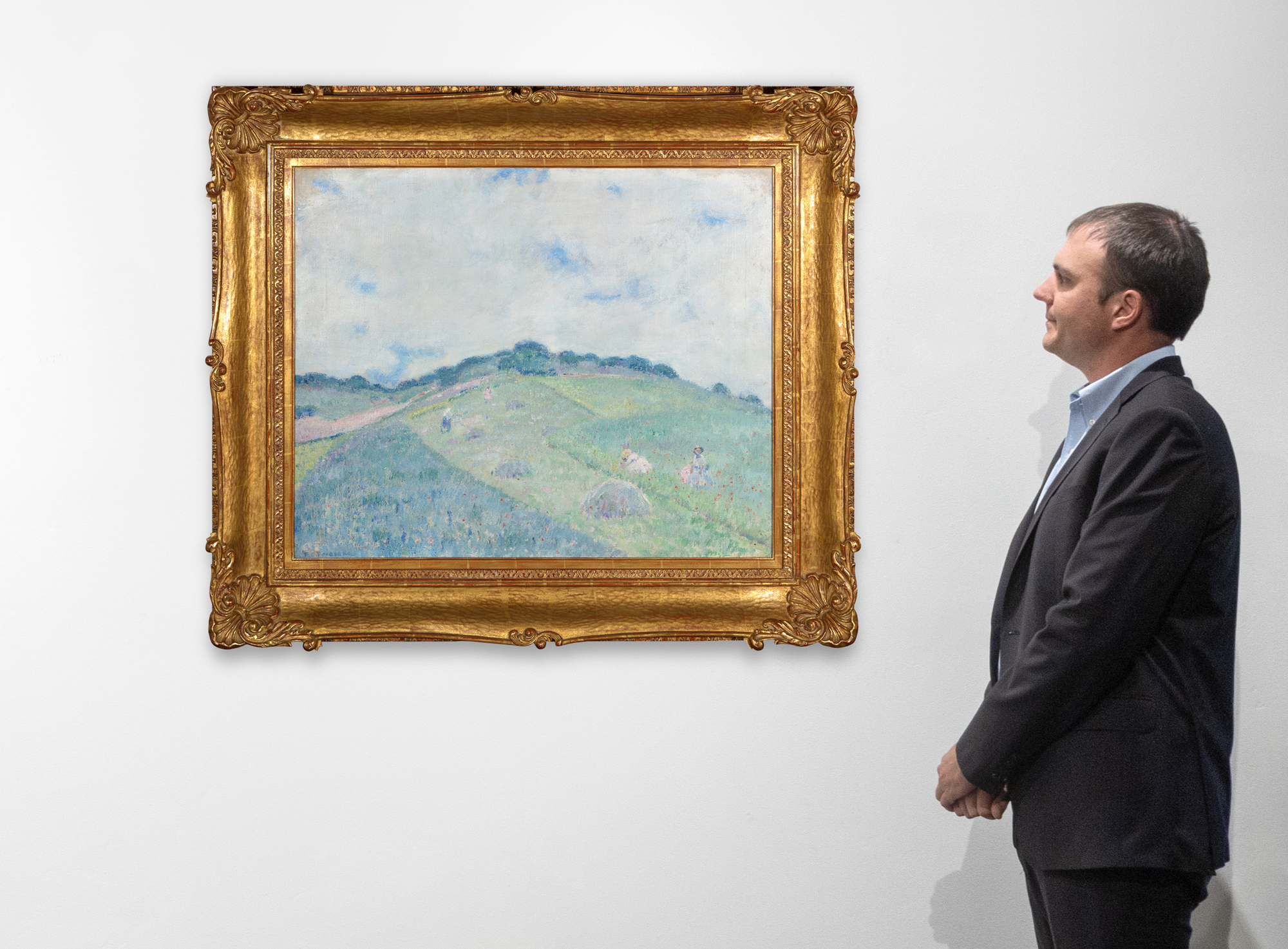
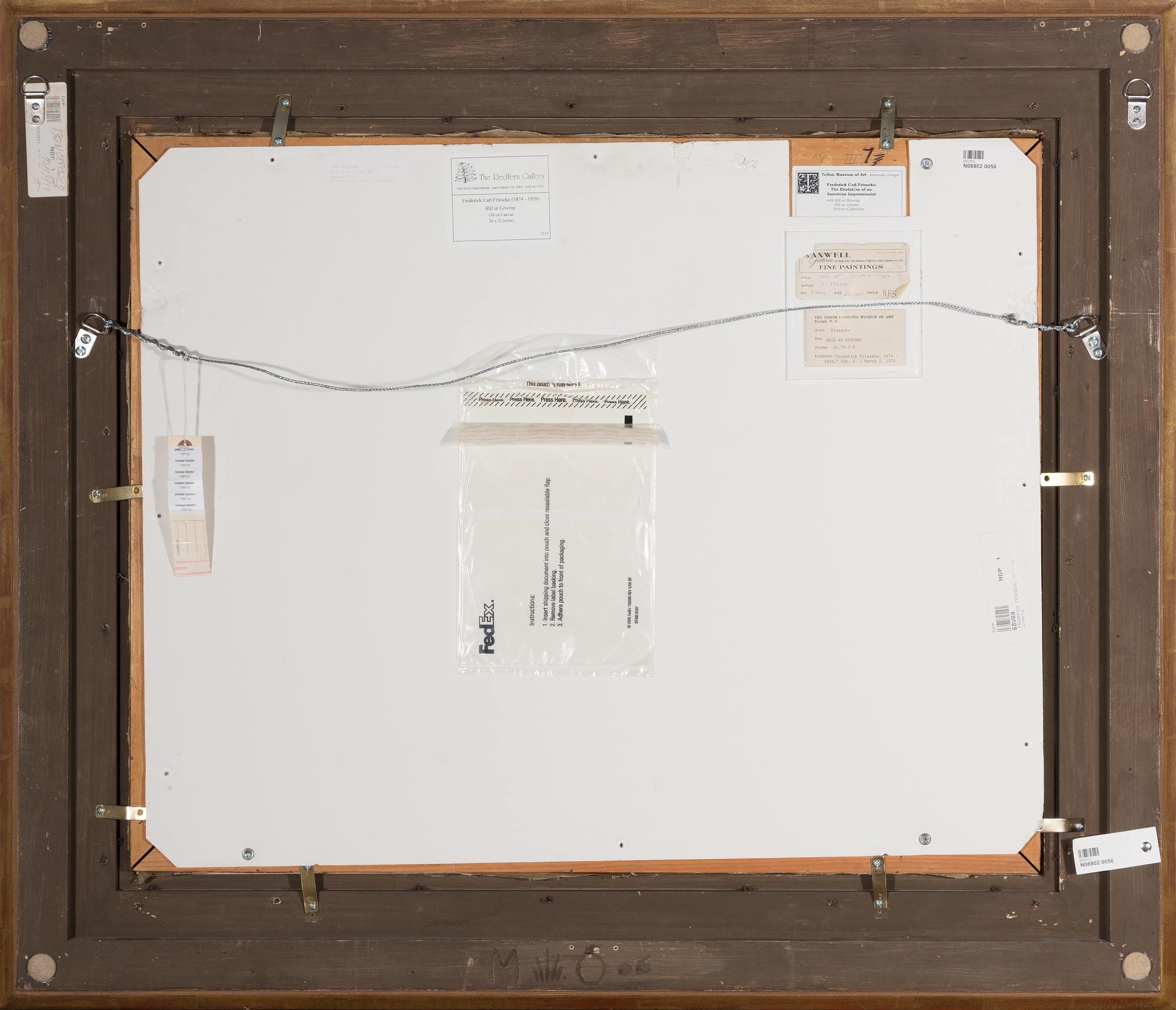
Provenance
By direct descent in the artist's familyPrivate Collection, New York
Exhibition
New York, Hirschl & Adler Galleries, Frederick Frieseke, 1874-1939, April-May 1966Savannah, Georgia, Telfair Academy of Arts and Sciences; New York, Hirschl & Adler Galleries; Raleigh, North Carolina, North Carolina Museum of Art; St. Petersburg, Florida, Museum of Fine Arts; Columbia, South Carolina, Columbia Museum of Art, Frederick Frieseke, 1874-1939, November 1974-June 1975, no. 7
Owosso, Michigan, Shiawassee Arts Council, 1976
San Francisco, Califo...More...rnia, Maxwell Galleries, A Retrospective Exhibition of the Work of F.C. Frieseke, May-June 1982, no. 20, illustrated in color p. 24
Savannah, Georgia, Telfair Museum of Art; Memphis, Tennessee, The Dixon Gallery and Gardens; San Diego, California, San Diego Museum of Art; Chicago, Illinois, Terra Museum of American Art, Frederick Carl Frieseke: The Evolution of an American Impressionist, March 2001-February 2002, no. 49, illustrated in color p. 173
Literature
Kilmer, N., McWhorter, L., & Telfair Museum of Art (2001), Frederick Carl Frieseke: the evolution of an American impressionist, Telfair Museum of Art; Princeton University Press...LESS...
195,000



















